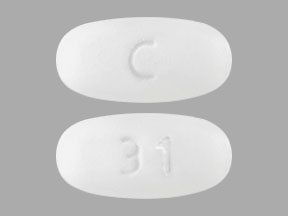
Erythromycin Base Coupons & Savings Card – Discount Prices from $92.52
Generic for: Ery-tab
My prescription
Edit
250MG, Erythromycin Base (90 Tablet Delayed Releases)
Select pharmacy

CVS
$92.52
COUPON PRICE
Walgreens
$194.51
COUPON PRICE
Albertsons
$250.15
COUPON PRICE
Walmart
$379.18
COUPON PRICEErythromycin Base savings card
Show this card to your pharmacist
CVS
$92.52
BIN
ID
PCN
GRP
019876
LH86C4D37D
CHIPPO
LHX
Powered by
More prescriptions for urinary tract infection
More prescriptions for urinary tract infection
Erythromycin Base dosage forms
Dosage Quantity Price from Per unit 250MG 90 Tablet Delayed Releases $92.52 $1.03 250MG 30 Tablet Delayed Releases $42.84 $1.43 333MG 30 Tablet Delayed Releases $52.53 $1.75 333MG 100 Tablet Delayed Releases $133.10 $1.33 500MG 6 Tablet Delayed Releases $26.62 $4.44 500MG 30 Tablet Delayed Releases $61.11 $2.04 500MG 100 Tablet Delayed Releases $161.70 $1.62
| Dosage | Quantity | Price from | Per unit |
|---|---|---|---|
| 250MG | 90 Tablet Delayed Releases | $92.52 | $1.03 |
| 250MG | 30 Tablet Delayed Releases | $42.84 | $1.43 |
| 333MG | 30 Tablet Delayed Releases | $52.53 | $1.75 |
| 333MG | 100 Tablet Delayed Releases | $133.10 | $1.33 |
| 500MG | 6 Tablet Delayed Releases | $26.62 | $4.44 |
| 500MG | 30 Tablet Delayed Releases | $61.11 | $2.04 |
| 500MG | 100 Tablet Delayed Releases | $161.70 | $1.62 |
Erythromycin Base Warnings
The safety and warning information below provides essential guidance on the proper use of erythromycin eye ointment. It is crucial to adhere to these instructions to minimize potential risks and ensure safe application. If you have any questions or concerns, please consult your healthcare provider.
Application Area: Erythromycin eye ointment is intended exclusively for application on the eye's surface. Avoid using it in your mouth, nose, or any other body parts.
Risk of Infections: Prolonged use of erythromycin eye ointment can increase the likelihood of developing other eye infections, such as fungal infections. It is not suitable for treating viral eye infections, as it may exacerbate the condition. Contact your healthcare provider if you experience symptoms like eye pain, redness, blurred vision, sensitivity to light, or watery discharge, or if there is no improvement in your condition within a few days, as these could indicate a new or worsening infection.
Allergic Reactions: If you have a history of allergies to antibiotics, such as clarithromycin or azithromycin, inform your healthcare provider before using erythromycin eye ointment. Be vigilant for signs of an allergic reaction, including swollen eyelids or red, itchy eyes. If these symptoms occur, discontinue use immediately and contact your healthcare provider.
There are no specific contraindications available for erythromycin eye ointment. Always follow the prescribed duration of use and dosage to avoid complications.
Erythromycin Base Side Effects
Common side effects:
- nausea
- vomiting
- diarrhea
- stomach pain or cramping
- loss of appetite
- mild eye irritations
- redness
Less common but important to monitor:
- oral thrush
- yeast infections
- white patches in the mouth
- changes in vaginal discharge
Serious side effects:
- signs of liver disease
- persistent nausea or vomiting
- yellowing of the eyes or skin
- dark urine
- severe stomach pain
- unusual tiredness
- muscle weakness
- trouble speaking
- blurred vision
- drooping eyelids
- hearing loss
- severe dizziness
- fainting
- fast or irregular heartbeat
- serious intestinal condition (C. difficile)
- persistent diarrhea
- abdominal pain
- blood or mucus in the stool
- severe allergic reaction
- rash
- swelling of the face, tongue, or throat
- difficulty breathing
Erythromycin Base Interactions
Interactions with high risk of serious adverse effects and should be avoided:
- Amiodarone
- Dofetilide
- Pimozide
- Procainamide
- Propafenone
- Quinidine
- Sotalol
- Digoxin
Interactions with moderate risk that may require dose adjustment, closer monitoring, or timing changes:
